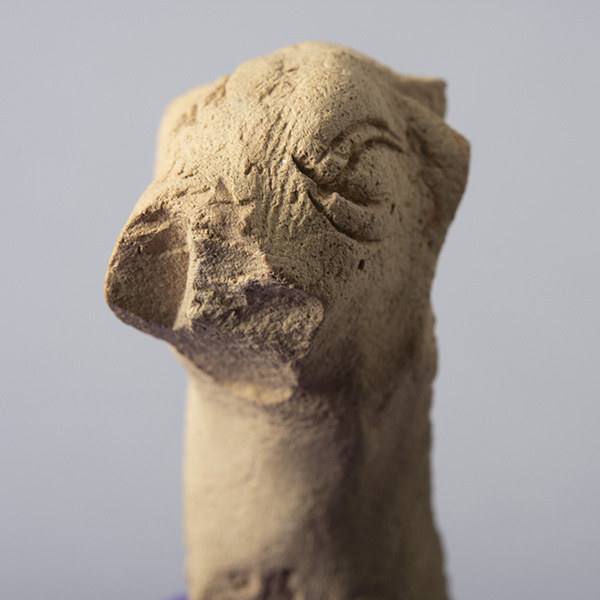

Figurine head, “Jacobobad”, Indus Valley Collection (MMA 98.74.7)
Leslie asks: What materials do you have that people would be surprised to know are in the Maxwell Museum?
In its early decades, Maxwell Museum staff were eager to build collections to create a world-class Anthropology Museum. Frank Hibben, the Museum’s first director (and for three decades its only staff member) was an avid collector, eager to build collections from around the world for his young museum (and as the story of the Smith Family Totem pole reveals, his collecting practices could be problematic). In many cases, we currently lack detailed documentation concerning how he acquired specific collections for the Museum—whether through trade, purchase, or visits to distant regions. One such ‘mystery collection’ is a small collection of artifacts from the Indus Valley culture of South Asia.

In the basement of the Hibben Center, each artifact was removed one-by-one and examined. The objects were small but each held a story. On a few of the ceramic sherds, marks from wheel throwing were visible, a rare sight in Maxwell ceramic collections, which mostly consist of ceramics built using coiling and other hand-building techniques characteristic of Native pottery in the US Southwest. Many of the sherds had decorations both painted and incised. Undoubtedly, the best part of the collection were the tiny ceramic figurines. Though fragmented, the tiny tails, carved eyes, and horns were still visible.
All the accompanying information and artifact descriptions were cataloged in to an excel sheet for researchers to use at a later date. Finally, each piece was re-bagged and safely placed into its new home; an artifact-friendly box that now rests in the museum storage. The final step in processing this mysterious Indus Valley collection was to photograph each individual artifact so that the images and descriptions could be sent to a specialist for proper identification. Soon this collection from the Indus Valley will no longer be a mystery but another unique set of artifacts in the Maxwell Museum, ready and waiting for future researchers and students.
Entry by: Emily Hayes-Rich
To learn more about Indus Valley Archaeology, visit https://www.harappa.com/
Carla M. Sinopoli, 2015, Ancient South Asian cities in their Regions. In, In, Cambridge World History, Vol. III: Early Cities in Comparative Perspective, 4000 BCE-1200 CE. Ed. by N. Yoffee, pp. 319-342. Cambridge University Press.